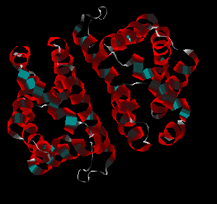
Research
Evolution by Gene Duplication
Much like humans, gene duplicates may be created equal, but they do not stay that way for long. Many of them get eliminated through deleterious mutations, others diverge in sequence and function, but the remainder may retain similar functions for a long time. What role does natural selection play in this divergence? How do new gene functions arise? Gene duplications cause an increase in gene expression? Does this increase carry a significant energy cost? These are some of the questions we are asking.
Despite the divergence of most duplicate genes, some genes with overlapping functions have been retained, in some cases for hundreds of millions of years. Examples include the many partially redundant genes in vertebrates, the result of ancient gene duplications in primitive chordates. Gene duplicates with similar functions may provide robustness against mutations, environmental change, and noise. Does natural selection retain some duplicates with similar functions because of the robustness they can provide? Using the apparatus of mathematical population genetics, we showed that natural selection can maintain redundant gene duplicates in sufficiently large populations.
In other work, we characterized the sequence and functional divergence of thousands of duplicate genes in different organisms, and showed that this divergence is often asymmetric. That is, one of two duplicates diverges much more rapidly than the other. This hints at the role of positive selection of genes that have acquired new functions in the divergence of duplicate genes. Finally, we have also shown that the increases in gene expression caused by gene duplication carry an energy cost that is high enough to be selected against in large populations.
Selected Publications
Wagner, A. (2005) Energy constraints on
the evolution of gene expression. Molecular Biology and Evolution22:1365–1374. [PDF] ![]()
Wagner, A. (2005) Distributed robustness
versus redundancy as causes of mutational robustness. Bioessays 27 ,176–188. [PDF] ![]()
Wagner, A. (2002) Asymmetric functional
divergence of duplicate genes. Mol. Biol. Evol. 19, 1760-1768. [PDF] ![]()
Wagner, A. (2000) The role of pleiotropy,
population size fluctuations, and fitness effects of mutations in the
evolution of redundant gene functions. Genetics 154,
1389-1401 [PDF] ![]()
Wagner, A. (2000) Decoupled evolution
of coding region and expression patterns after gene duplications: implications
for the neutralist-selectionist debate. Proc. Natl. Acad. Sci. U.S.A.97,
6579-6584. [PDF] ![]()